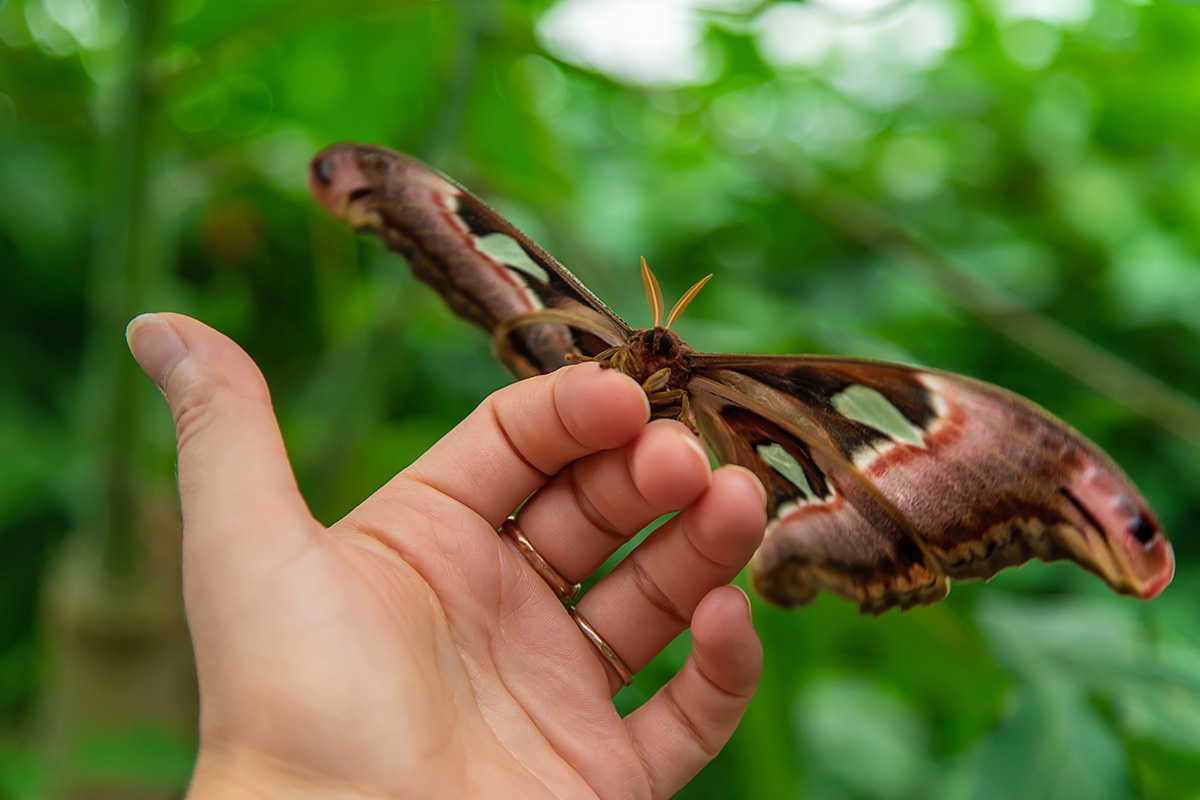Bali is often referred to as paradise on earth, rich in culture, nature, and wildlife in Bali. The island is home to many domestic species and wild animals in Bali, making it one of the world’s top destinations for honeymoon, solo travelers, or families alike.

From the forests to the villages, you’ll find a wide range of animals, from common spotted doves and monkeys to rare endemic species like the starling. This diversity shows how unique animals in this Earth’s paradise truly are, even though the island has no large predators like jaguars or tigers. This guide highlights some of the most well-known Bali animal species and includes safety tips for visitors.
Native Animals in Bali
Bali native animals are very diverse; some are nearly extinct, while others are exotic creatures that still live in the wild areas of forests. Balinese people love their animals, especially their pets and livestock, and they even create special offerings for God to bless them twice a year through the ceremony known as Tumpek Kandang. Here are the most popular animals:
1. Dogs
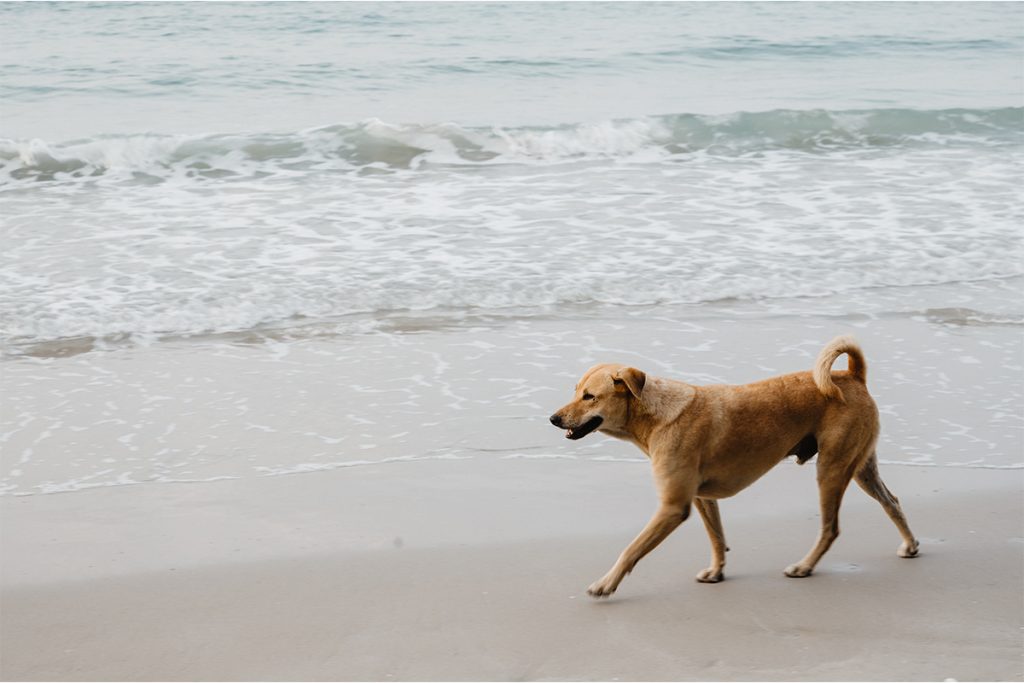
Bali has many free-roaming dogs with short fur and upright ears, and you can easily find this type of bali animal everywhere on the island. One of the most recognized native dogs, the Kintamani dog, is thought to be one of the oldest dog breeds in the world.
This specific type of dog is also used in certain offerings, although it remains a cultural controversy. Dogs are an important part of Balinese life, but sadly, cases of poisoning and dog killings have occurred in the past. Since most dogs here are not vaccinated, visitors should avoid petting street dogs, as they can carry rabies.
2. Cats

Bali’s cats often live as semi-feral pets. That’s why most cats are not kept indoors and instead roam freely around villages. Many cats in this island have short or kinked tails due to local genetics, but they are generally shy.
These cats can sometimes be loud and may rummage through garbage cans in search of food. It’s recommended to keep garbage bins closed at night to avoid this. Cats in Bali are not always friendly and may carry illnesses, so it is best to avoid petting them.
3. Sapi Bali (Bali Cattle)
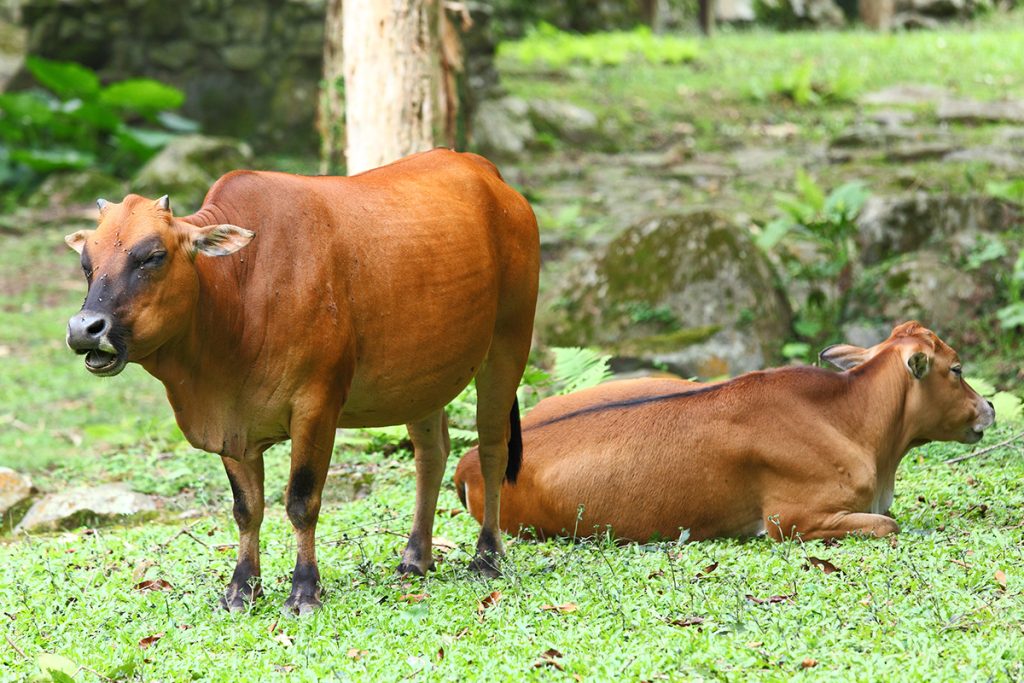
The Bali cattle, scientifically known as Bos javanicus domesticus, is a unique local cow breed. Unlike other cattle, animals like these were traditionally used to plow rice fields rather than for dairy farming. Some people breed them as livestock, and the price of a fully grown cow can reach IDR 20–30 million.
Because cows are sacred in Hindu culture, they are respected and well cared for. Most Balinese do not eat beef; instead, they breed and sell cattle mainly to the Muslim community living in Bali.
4. Monkey (Long-tailed Macaque):
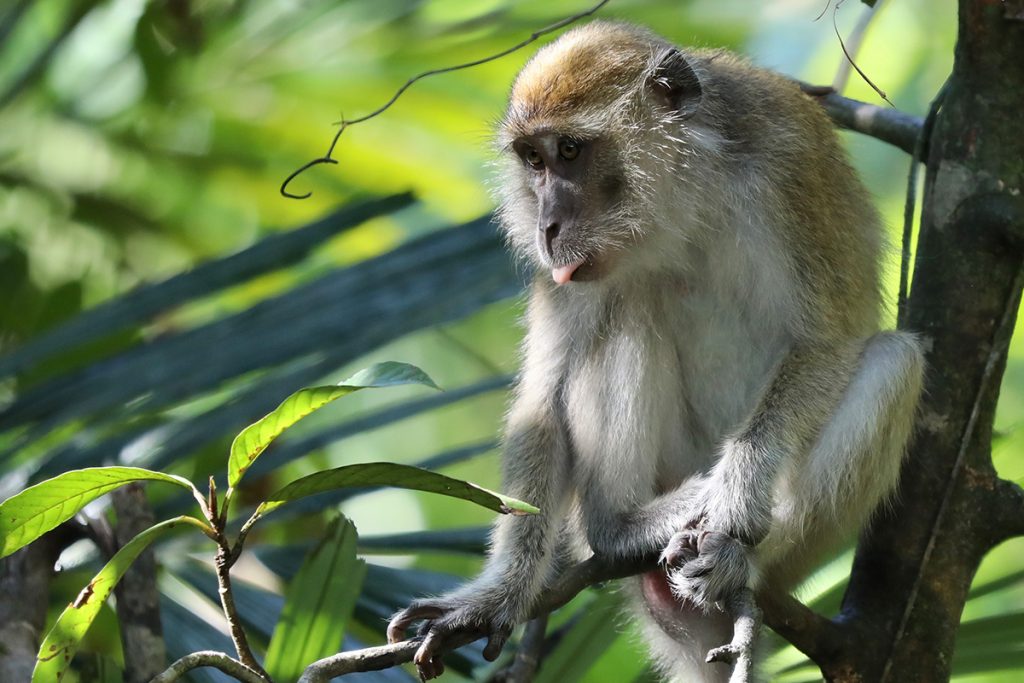
The long-tailed macaque (Macaca fascicularis) is one of the most famous wild animals in Bali. In Hindu culture, this monkey has a deep connection with mythology, as it represents Hanoman, a loyal soldier of Shri Rama in the Ramayana epic.
The Bali monkeys live in places such as the Ubud Monkey Forest and temple areas like Pura Uluwatu, Pura Lempuyang, and Pura Pulaki. Monkeys are curious animal and sometimes steal food or items from visitors; if startled, one monkey may alert the entire group.
5. Chickens and Roosters
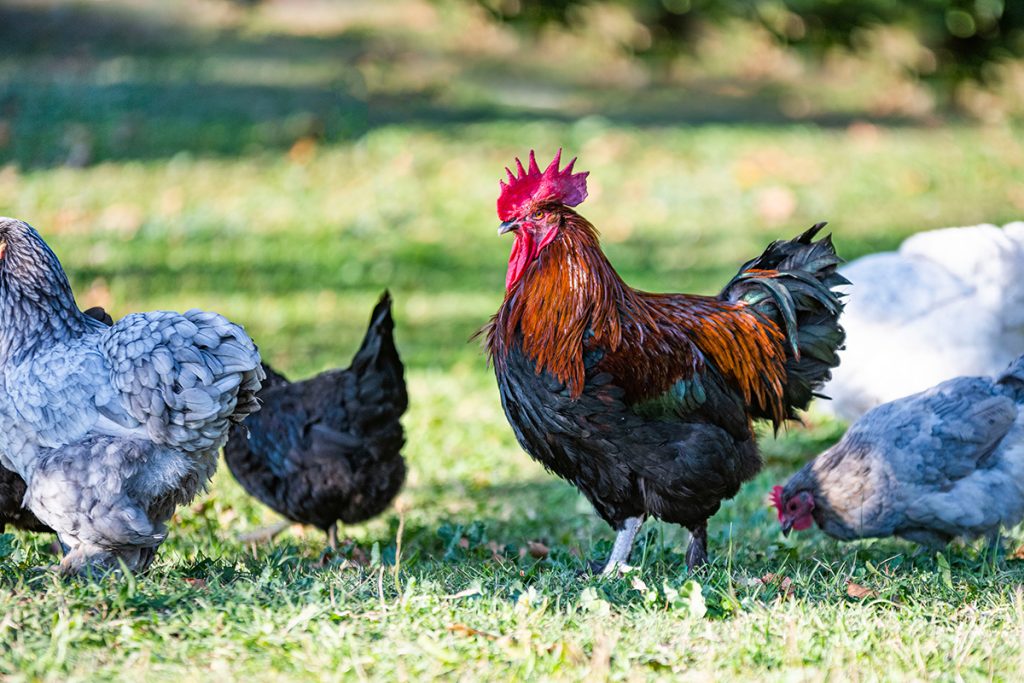
Free-range chickens are everywhere on this island, and many households raise chickens and roosters. Roosters crow loudly at dawn and throughout the day. In fact, the morning “cock-a-doodle-doo” is one of the most recognizable sounds of animals in Bali.
Traditionally, people here are raised roosters for eggs, meat, and cultural cockfights, but today they mostly serve as farm animals and natural alarm clocks. There is also a mystical story about chickens and roosters: if you see one wandering at night, locals believe it may not be real but instead a devil spirit taking the form of a chicken.
6. Geckos
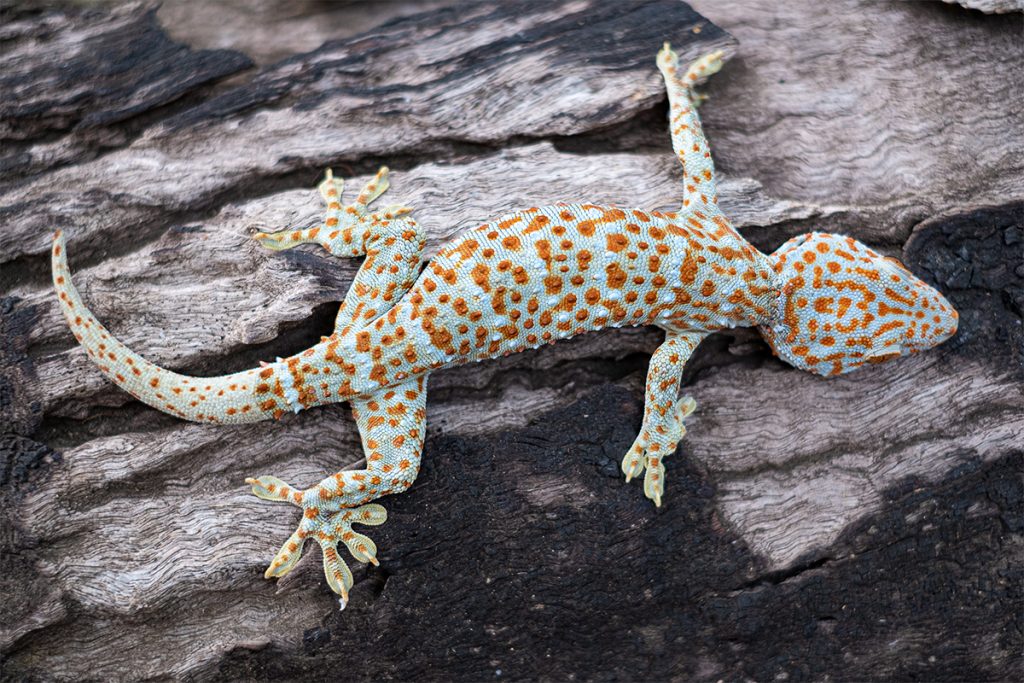
Several gecko species live in Bali, especially in houses, villages, and forested areas. The most famous is the Tokay gecko, a nocturnal Bali animal that makes a very loud “tok-kay” call at night.
These harmless lizards cling to walls and ceilings, feeding on insects, even mosquitoes, which is why many people in this island allow these animals to live in certain parts of their homes. In Balinese culture, Tokay geckos are often seen as symbols of good luck.
7. Monitor Lizards (Biawak)
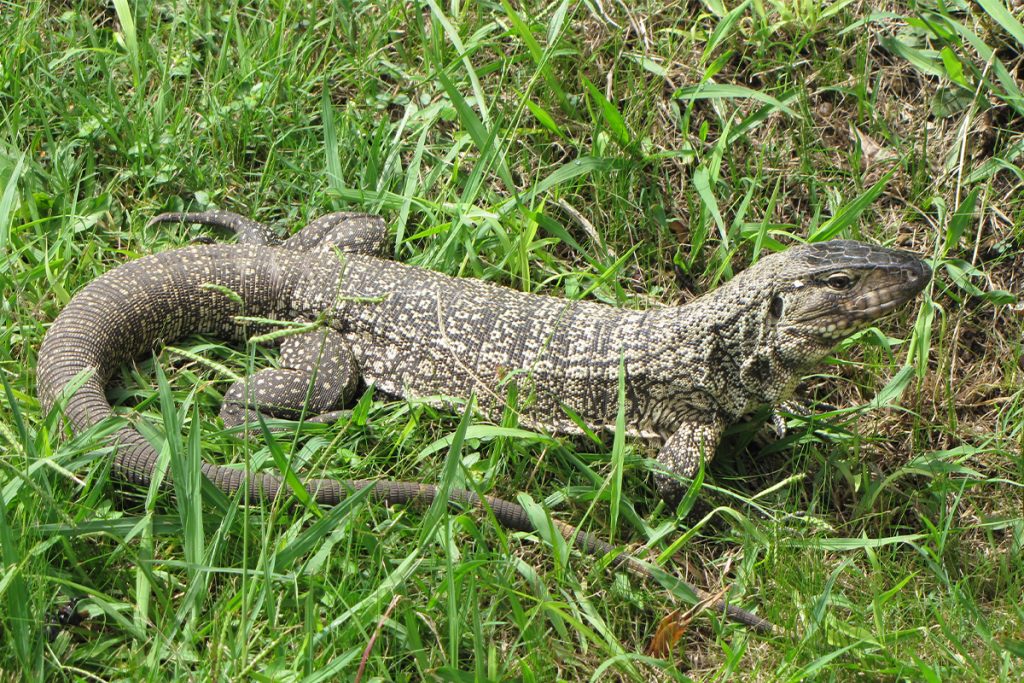
Bali’s forests and rivers are home to water monitor lizards, locally known as biawak or alu. Their scientific name is Varanus salvator bivittatus, and they share the same genus as the Komodo dragon, an Indonesian endemic species that has survived since the age of dinosaurs.
These large reptiles can grow over 1 meter long but are generally shy and avoid people. They live near water like waterfalls in Ubud or jungle areas, and prey on fish, frogs, eggs, and chickens. While they look intimidating, monitor lizards rarely attack unless threatened, so they are not considered among the most dangerous animals in Bali.
8. Pigs (Wild Boars)
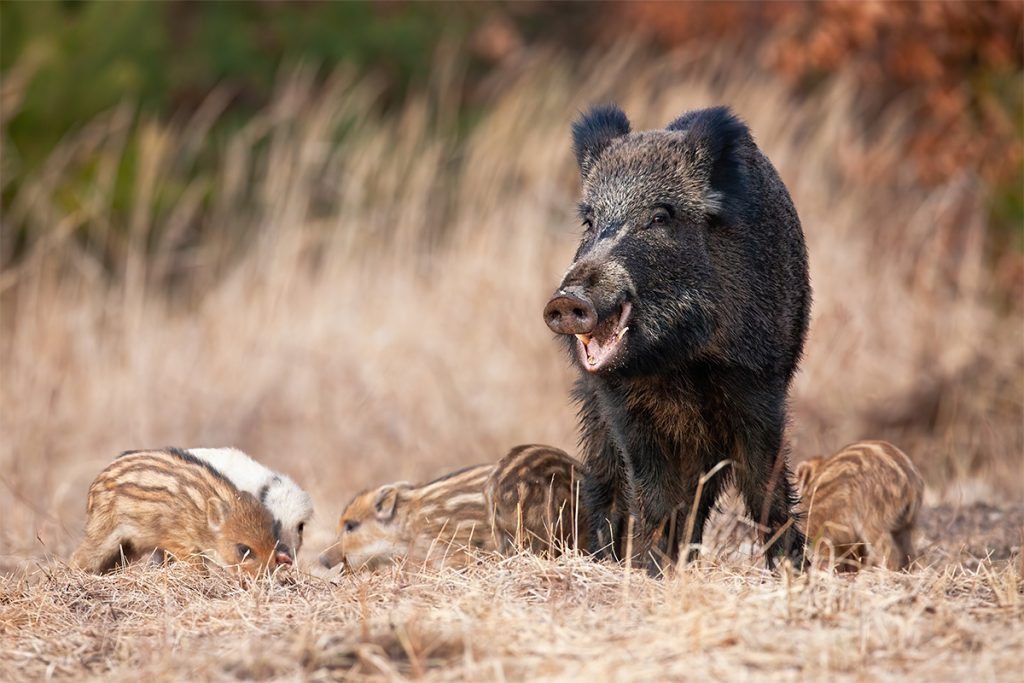
This paradise island also has wild pigs, or boars, that roam in its forests, especially in the western part of the island. These wild boars (Sus scrofa vittatus) are larger and have tusks compared to village pigs, and they are often seen in jungle areas or national parks.
Wild boars usually avoid humans, but they can charge if cornered, so it is best to keep a respectful distance. This type of pig is not commonly eaten by people here because the meat is muscular and tough, while the suckling pig (from village pigs) is the one traditionally enjoyed in Balinese cuisine.
9. Birds (Doves, Mynas, Bali Starling)
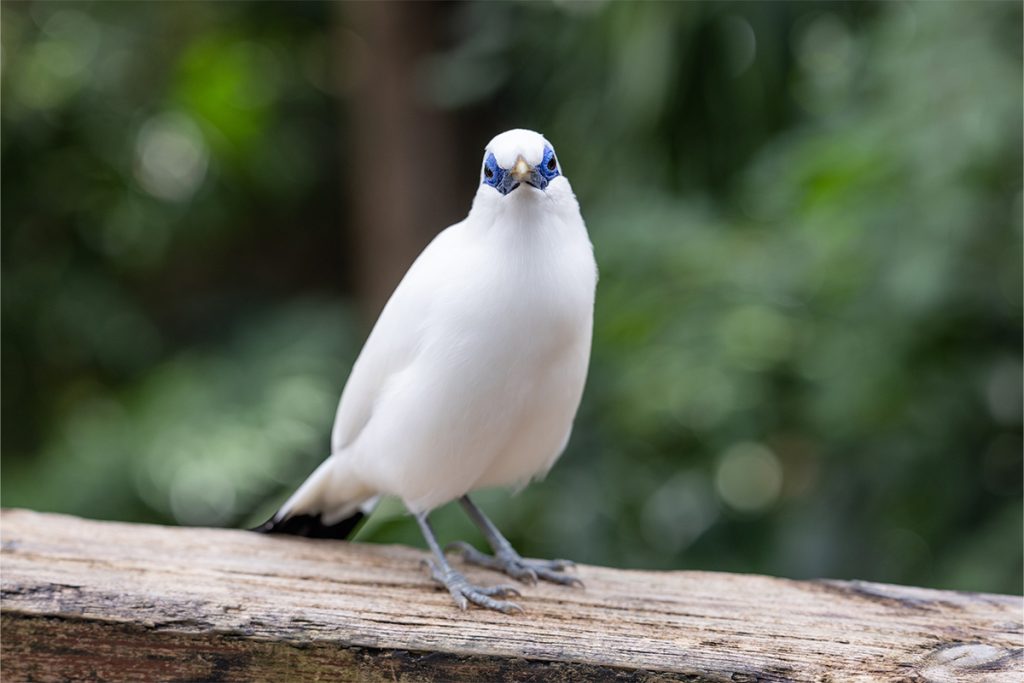
As of 2025, there are more than 300 bird species recognized in this island of God, making birds some of the most diverse animals in Bali. Common village birds include spotted doves and zebra doves, small gray-brown species often found in gardens.
Another familiar village bird is the pigeon, which has a green iridescent sheen on its neck. The Javan myna (white-vented myna), a black-and-white starling native to Bali and Java, is often seen living alongside buffalo, feeding on fleas found on their bodies.
Most famously, the endemic starling (also called Bali myna) is a bright white bird unique to the island. This Bali native animal is critically endangered in the wild, so it can only be seen in protected areas like West Bali National Park or in zoos.
10. Spiders
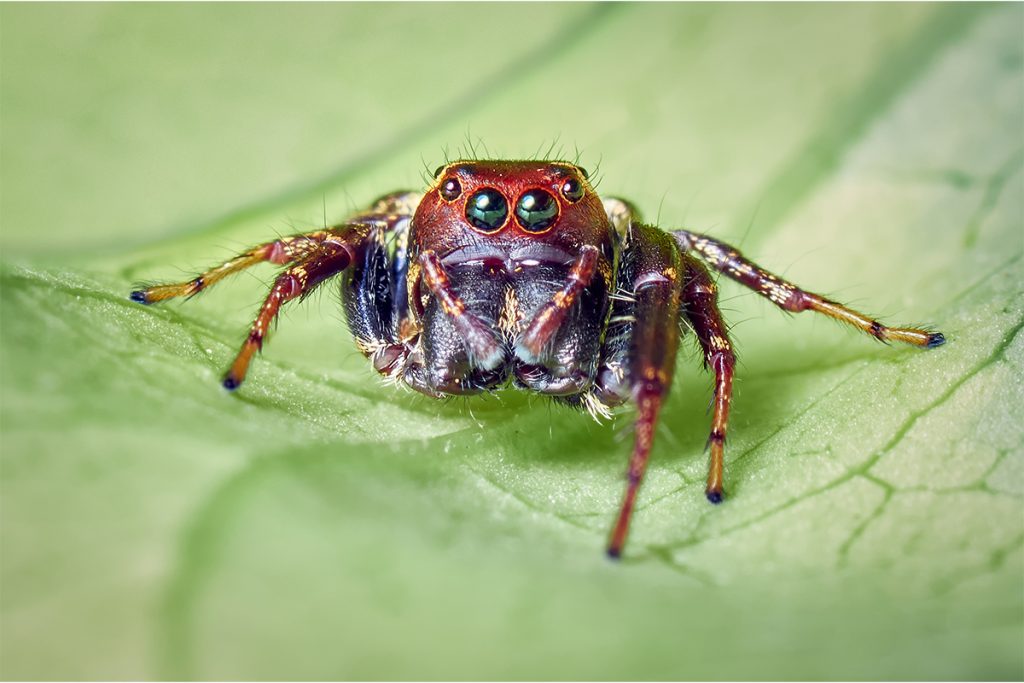
There are many spider species in Bali, but almost all are harmless to humans. Visitors may encounter Golden Orbweavers, huntsman spiders, or grass spiders, which often live quietly around villages and houses. No serious cases of spider attacks have ever been reported in this island, reinforcing the fact that these creatures are not among the truly dangerous animals in Bali.
For example, the giant huntsman spider (Pantropical Huntsman) looks frightening due to its large size, but its bite is not dangerous to humans. Spiders here typically avoid contact with people and help by catching flies, mosquitoes, and other insects.
11. Snakes
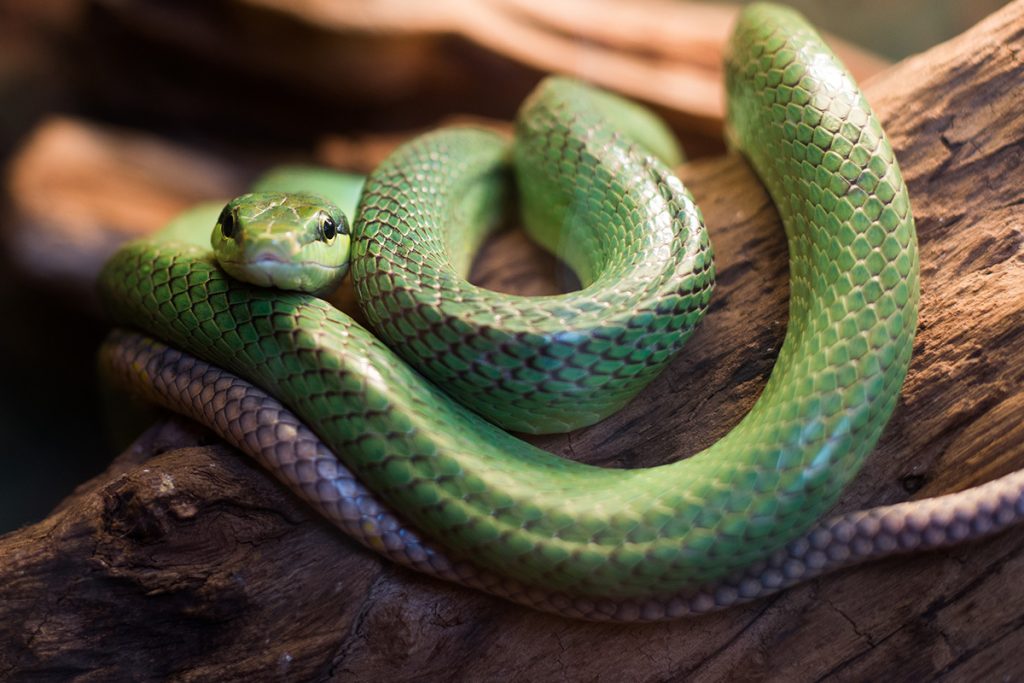
Bali is home to a variety of snakes, including some venomous species such as the King Cobra, Blue Krait, and Green Tree Pit Viper. These wild animals usually hide in tall grass or forested areas and often flee when they encounter people.
However, you should always be cautious, especially when walking through rice fields or forests where snakes may be present. Beaches and reefs are also home to sea snakes, which are highly venomous but typically shy.
If you encounter one, it’s best to remain calm and give it space; snakes generally do not attack unless provoked. Some temples here even consider sea snakes sacred, such as the holy cave sea snake at Tanah Lot Temple, which locals believe acts as a guardian spirit for the temple.
12. Butterflies
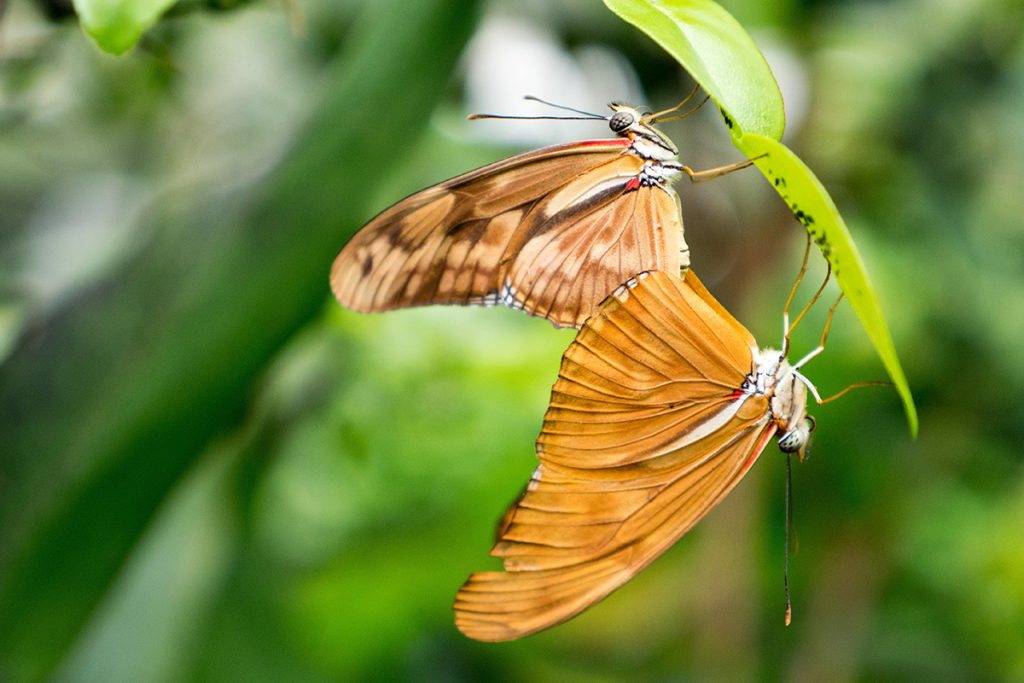
The tropical climate of Indonesia supports many butterfly species, making them some of the most colorful and charming Bali native animals. Villages that grow flowers for offerings naturally attract butterflies. Around 15 butterfly species are native to this paradise island, and one of the most popular is the Barong Butterfly, known for its unique colors and motifs.
The Bali Butterfly Park in Tabanan showcases all 15 native species along with many exotic butterflies from around the world. Visitors can enjoy the sight of butterflies fluttering around gardens, forests, and rice fields, adding to the richness of wildlife in Bali.
13. Sea Turtles
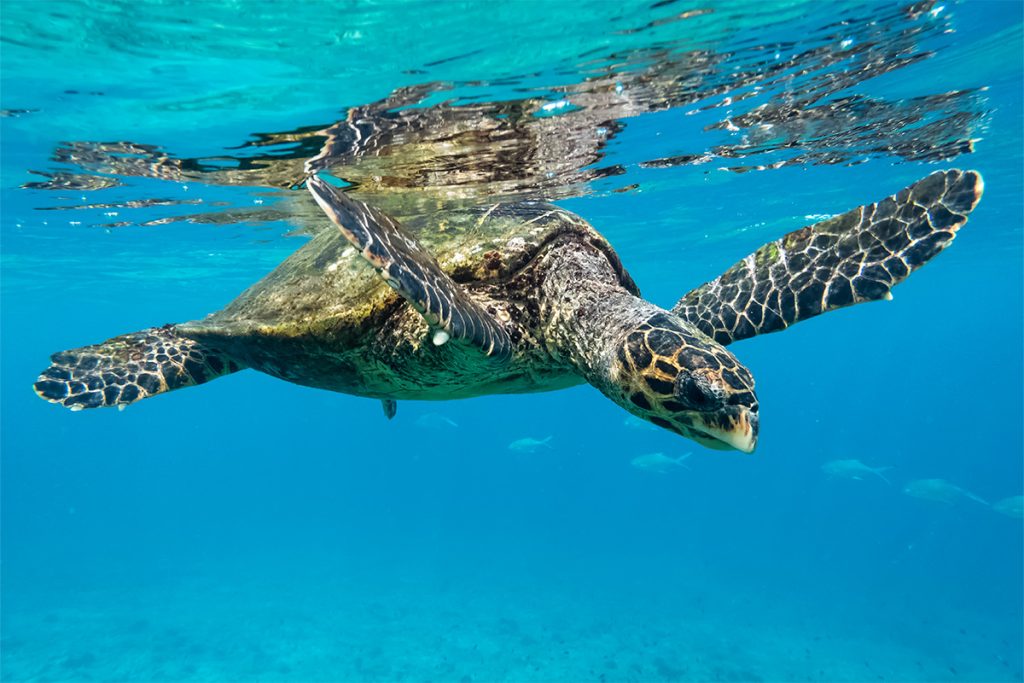
Sea turtles are a symbol of resilience and longevity in local beliefs. That’s why, when these Bali animals became endangered, conservation efforts were introduced to protect them. Today, many communities focus on preserving sea turtles through conservation centers and awareness programs.
Four species of sea turtles swim around the seas here: Hawksbill, Green, Loggerhead, and Olive Ridley turtles. These turtles occasionally nest on quiet beaches. Many local parks and dive centers run turtle-release programs to help hatchlings survive and to educate visitors about the importance of protecting wildlife in Bali.
14. Deer (Menjangan Island)
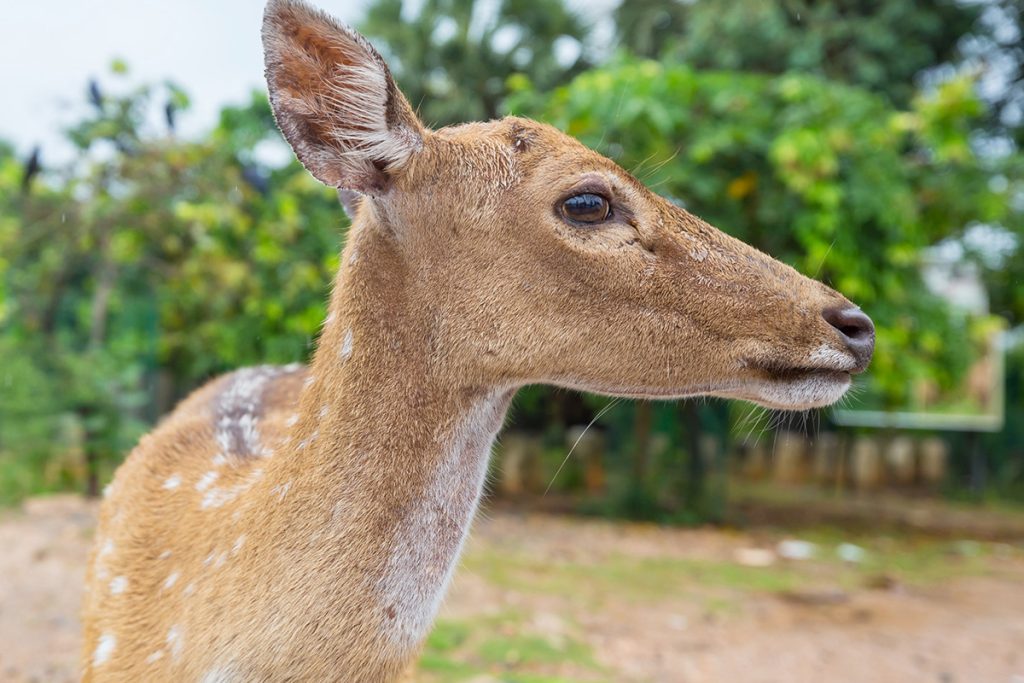
West forests are home to barking deer, a type of muntjac from the Muntiacus family, which is part of the broader Cervidae deer family. These shy Bali native animals are primarily found in West Bali National Park and on Menjangan Island, a pristine islet that has retained much of its untouched natural beauty.
The word Menjangan itself is an old local term meaning “deer.” In the past, these deer had natural predators, the Bali tiger. However, if you are wondering if there are tigers on this island, the answer is no: the Bali tiger was declared extinct in 2008 due to poaching and habitat loss.
Sadly, the Menjangan deer are also endangered, as they are often hunted illegally for their antlers. Conservation efforts are ongoing to protect these important wild animals in Bali.
15. Manta Rays
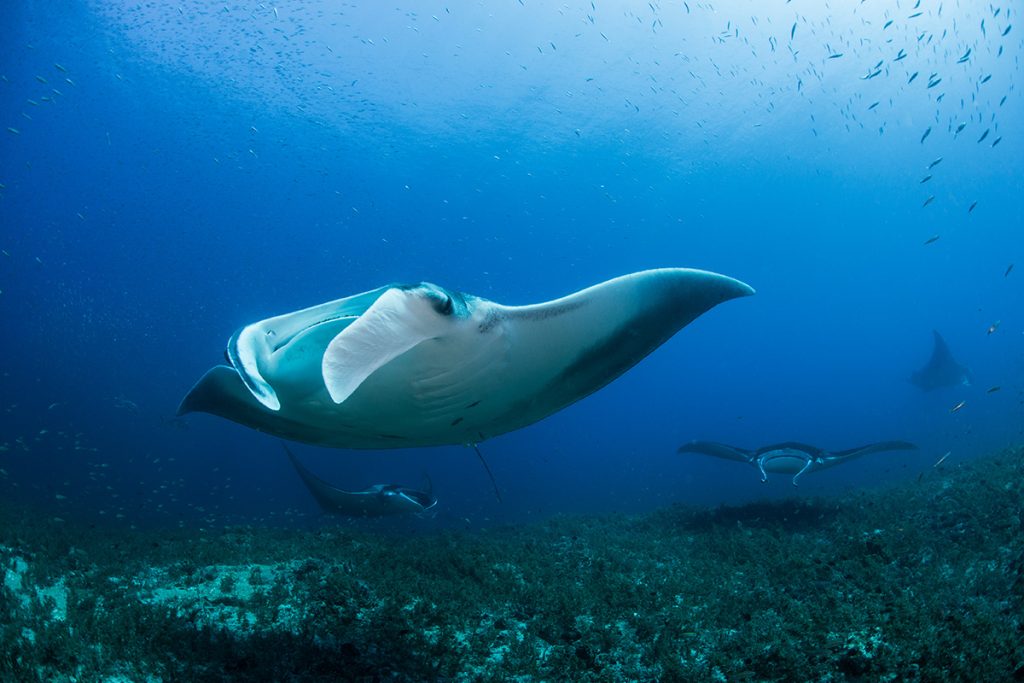
As one of the world’s biggest dive sites, it is world-famous for manta rays (Mobula alfredi). These giant rays, with wingspans up to 4 meters, are often seen around Nusa Penida and Manta Point. Divers and snorkelers frequently encounter these gentle giants gliding gracefully along reef ledges, making them one of the most spectacular marine Bali animals to witness.
The large ocean sunfish, or mola mola, is another fascinating creature often spotted near deep-water currents. They typically reside near the coral reefs of Nusa Penida.
However, travelers should be aware that the currents around Nusa Penida can be dangerous during certain weather conditions, so caution and guidance from local dive operators are essential.
16. Bats
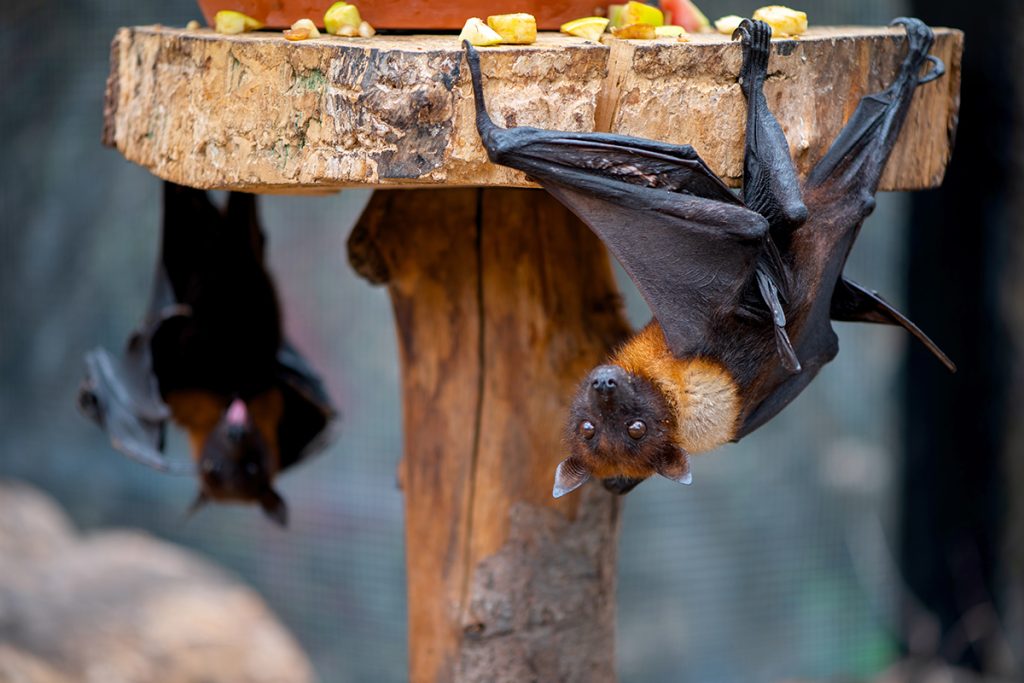
Bali has both large fruit bats and smaller insect-eating bats. They usually live in caves such as Goa Lawah (translated as “bat’s cave”) or in banana leaf buds. Flying foxes, which are big fruit bats, roost in forests like Bali Barat National Park.
At dusk, you may see bats flying out to eat fruit or drink nectar. These animals play an important role in pollinating trees and dispersing seeds, making them a vital part of wildlife in Bali.
17. Frogs
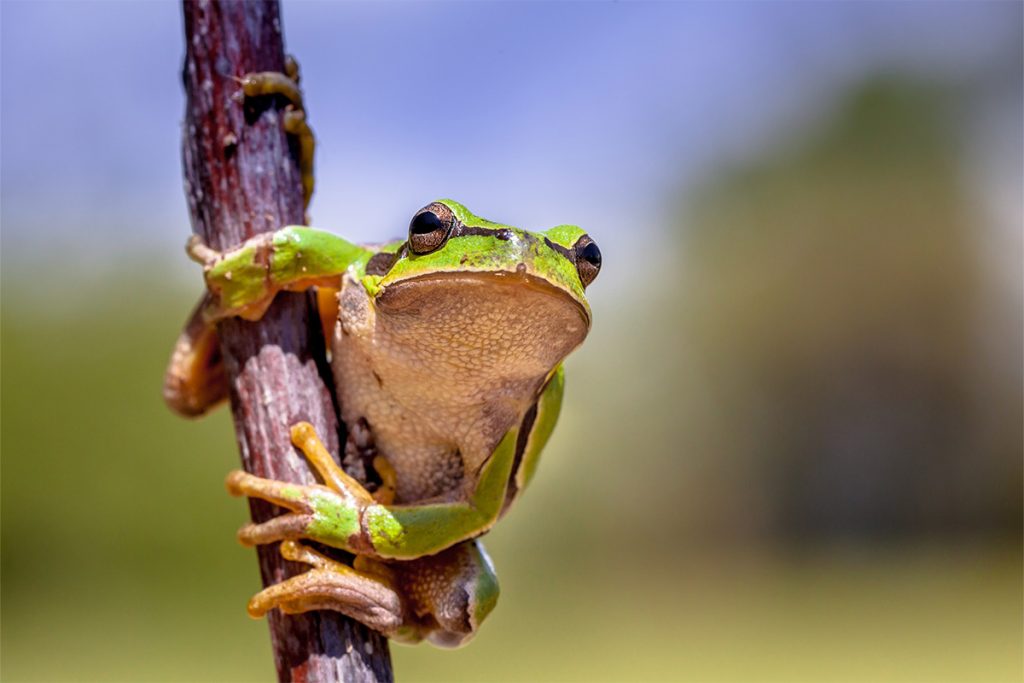
This island also is home to several species of frogs, such as Microhyla orientalis (known as Percil Bali) and Polypedates leucomystax. According to a Mongabay report in 2013, the smallest frog in here was discovered, about the size of a human fingernail, also belonging to the Percil family.
Many frogs and toads live in ponds and rice fields. You’ll hear frogs croaking loudly after rain in the wet season. These animals in Bali help control insects and are harmless to humans.
Balinese people believe that frog sounds are a sign that the rainy season in Bali has started or that blessings are on their way, giving frogs a symbolic place among native animals.
18. Luwak (Asian Palm Civet)
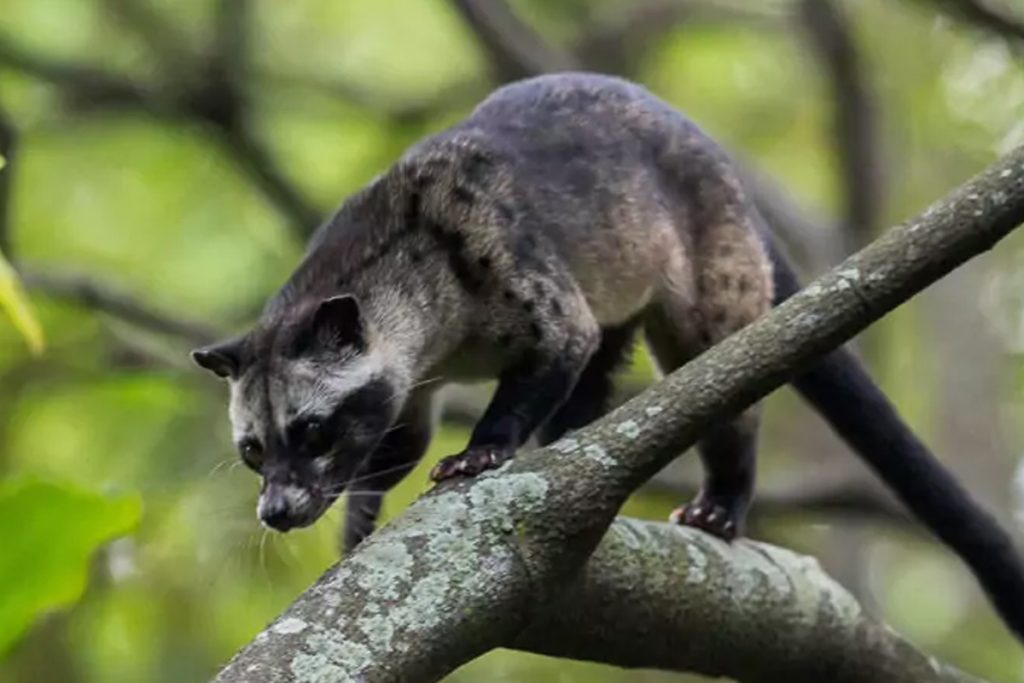
The Indonesian word luwak refers to the Asian palm civet, a nocturnal mammal found in jungles. This cat-like animal eats fruit (including coffee cherries) at night and can be found in several regions such as Tegallalang, Tabanan, Karangasem, and Jembrana.
Luwaks are famous for producing kopi luwak (civet coffee) from beans they excrete, creating a complex taste that is soft, sweet, with hints of chocolate and fruit. Luwaks generally avoid people, so you are unlikely to see one in daylight.
Even though they may look similar to possums or sloths, they actually belong to the Viverridae family, relatives of the bearcat. This makes them unique among wild animals in Bali.
Animals in Bali That Have Strong Sound
Some animals in Bali can be very loud, producing strong sounds that may disturb light sleepers. Here are the animals known for their distinctive calls:
1. Roosters
Roosters crow at dawn and continue throughout the day. The familiar “cock-a-doodle-doo” is one of the island’s most common sounds. Early risers on this island are used to the lively chorus of roosters greeting the morning.
2. Geckos
The Tokay gecko, a large household lizard, makes a loud “tok-kay” call at night. If you stay in a villa, you may hear these chirps echoing from the walls after dark. While startling at first, geckos are harmless insect-eaters that help reduce mosquitoes. If the sound bothers you, villa staff can safely catch and remove them.
3. Cats
Stray cats may meow or yowl, especially when mating season. Their calls are not as booming as a rooster’s crow, but in quiet rural areas you may hear neighborhood cats communicating at night. Compared to other wild animals in Bali, cats are far less noisy.
4. Birds
Some birds on this island are highly vocal. Morning time here often begins with a chorus of birdsong, especially in Ubud or West Bali. Flocks of parrots and bulbuls can screech or chatter loudly, and the starling has a distinctive call. Even doves, with their soft cooing, add to the soundtrack of wildlife in Bali.
Tips for Facing Animals in Bali
Even though most of Bali’s animals are not dangerous, you should still pay attention to your safety. Here are some tips for facing animals in this tropical paradise.
1. Keep your distance
Never approach or attempt to pet wild or stray animals such as monkeys, dogs, or cats. Even those that seem friendly can bite or carry diseases like rabies. Respect their space and do not feed them.
2. Protect yourself at night
Wear shoes and long clothing when walking in rural areas. Keep doors and windows closed or screened after dark to avoid insects and snakes. Always check bedding or shoes for small creatures like geckos, spiders, or centipedes when staying in rustic villas.
3. Prevent bites
Use mosquito repellent daily, especially at dawn and dusk. Mosquitoes in Bali can carry dengue fever and, rarely, malaria. Sleep under nets or use coils if outdoors in the evening, and avoid standing water where mosquitoes breed.
4. Embrace helpful critters
Not all unexpected animals in Bali are dangerous. Geckos inside your room, for instance, feed on mosquitoes and ants. Instead of killing them, allow these insect-eating lizards to roam, they help keep bugs away.
Guidelines for Interacting with Animals in Bali
Visitors should still act responsibly. Always supervise children near monkeys or dogs, and never chase or handle wild animals in Bali.
If you are still concerned about encounters with animals, remember that most of Bali’s resorts and guides prioritize guest safety. For example, Ini Vie Hospitality, one of Bali’s leading hotel operators, ensures that all its properties are carefully managed and supervised to keep guests safe from harmful creatures and to maintain the balance between comfort and wildlife in Bali.
